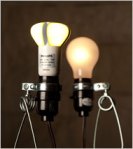While President Obama sets about attempting to fix our national counter terrorism analytic machinery – we learned this week via William J. Broad and The New York Times that the CIA is playing a very important assist in top climate change scientific analysis. In C.I.A. Is Sharing Data With Climate Scientists, Broad reports:
The nation’s top scientists and spies are collaborating on an effort to use the federal government’s intelligence assets — including spy satellites and other classified sensors — to assess the hidden complexities of environmental change. They seek insights from natural phenomena like clouds and glaciers, deserts and tropical forests.

East Siberian Sea
When you read it, it’s almost a “duh, of course” type of moment – why wouldn’t they and why shouldn’t they? And why haven’t they been doing this all along?
The program resurrects a scientific group that from 1992 to 2001 advised the federal government on environmental surveillance. Known as Medea, for Measurements of Earth Data for Environmental Analysis, the group sought to discover if intelligence archives and assets could shed light on issues of environmental stewardship.
Notice the dates? Now with W. and Dick out of the way – the scientists are getting back to this critical work.
“There are no other data available that show the melting and freezing processes,” the report said. “Their release will have a major impact on understanding effects of climate change.”
And real understanding really seems possible:
“I’m extremely pleased with what’s been happening,” said Michael B. McElroy, an atmospheric scientist at Harvard University and a senior member of the group. “It’s really first-rate.”
Among the program’s first responsibilities has been to assess earlier Medea projects to see which, if any, produced valuable information and might be restarted or expanded.
To add insult to injury the tea bagging Republicans can’t even complain about pork barrel spending because the cost is about as low as it gets:
Ralph J. Cicerone, president of the National Academy of Sciences and a member of the monitoring team, said the program was “basically free.”
What’s the nitty-gritty?
About 60 scientists — mainly from academia but including some from industry and federal agencies — run the effort’s scientific side. All have secret clearances. They obtain guidance from the National Academy of Sciences, an elite body that advises the federal government.
Dr. Cicerone said the monitoring effort offered an opportunity to gather environmental data that would otherwise be impossible to obtain, and to do so with the kind of regularity that can reveal the dynamics of environmental change…The C.I.A. runs the program and arranges for the scientists to draw on federal surveillance equipment, including highly classified satellites of the National Reconnaissance Office.
Makes you want to see some of these images yourself, doesn’t it? You can at the USGS Global Fiducials Library.
Sadly, I can’t help but be left thinking about all the lost knowledge of the Bush/Cheney years – a travesty.



